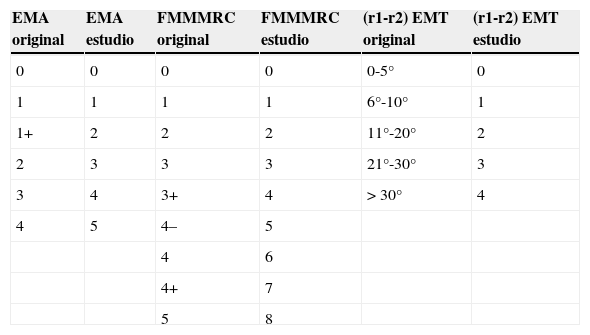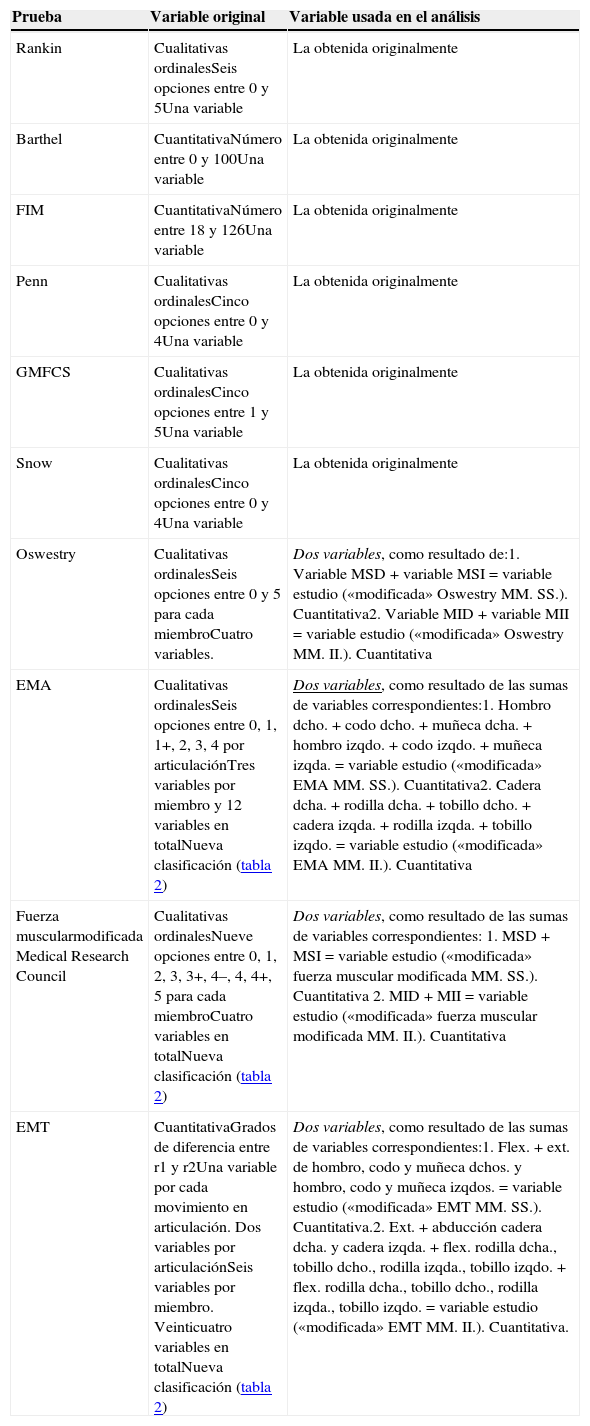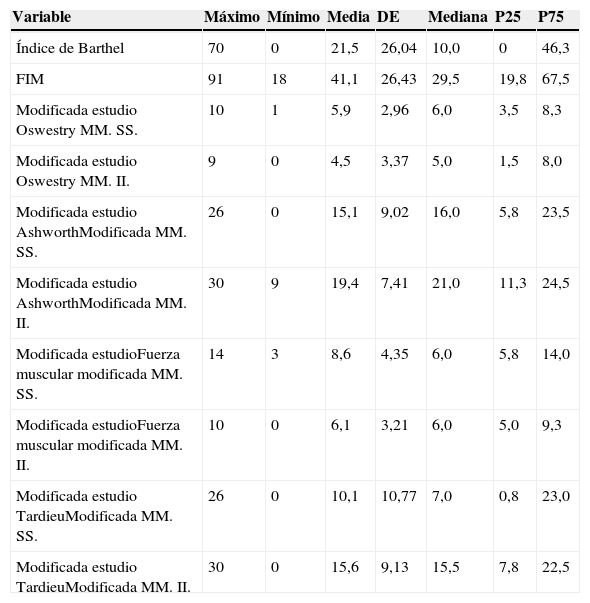Conocer las posibles correlaciones entre las escalas más utilizadas en la valoración de la espasticidad con aspectos más globales en cuanto a independencia y funcionalidad.
Material y métodoEstudio descriptivo, observacional y transversal. Participaron 10 adultos con parálisis cerebral y espasticidad a los que se les valoró con 10 escalas y pruebas funcionales para la espasticidad, independencia y funcionalidad. Se modificaron bajo los mismos parámetros algunas de las variables para reducir su número final y realizar el análisis estadístico. Para el estudio de las correlaciones se calculó el coeficiente de correlación Rho de Spearman con un error alfa del 5%.
ResultadosEn cuanto a escalas de espasticidad, las más comunes han tenido nulas o bajas correlaciones con las escalas del estado funcional, discapacidad o independencia personal utilizadas (la escala modificada de Tardieu solo con la escala de Rankin modificada rho=0,77 e índice de Barthel rho=–0,69 y la escala modificada de Ashworth solo con la escala de Palisano rho=0,79 y la escala de Rankin modificada rho=0,64). Otras, como la escala de Oswestry y la escala del tono aductor de las caderas, han obtenido altas correlaciones con prácticamente todas las escalas de independencia y funcionalidad (rho entre 0,86-0,65).
ConclusionesSe justifica el uso en la valoración del paciente con parálisis cerebral de la escala de Oswestry y la escala del tono aductor de las caderas ya que, además de medir parámetros relacionados directamente con la espasticidad, podrían ofrecer información relacionada con la independencia funcional en estos pacientes. Las escalas de Ashworth modificada o Tardieu modificada dan información muy selectiva.
To know the possible correlations between the scales used most in the measurement of spasticity with global independence and functionality aspects.
Material and methodsDescriptive, observational and cross-sectional study. Ten adult patients with cerebral palsy and spasticity who were evaluated with ten scales and functional tests for spasticity, independence and functionality participated. Some of the variables were modified using the same parameters to reduce their final number and carry out the statistical analysis. The Spearman Rho correlation coefficient with an alpha error of 5% was calculated to study the correlations.
ResultsRegarding scales in terms of spasticity, the most common showed no or low correlations with other scales of functional status, disability, or personal independence used (the modified Rankin scale only with the modified Tardieu scale (rho=0.77) and the Barthel index (rho=0.69) and the modified Ashworth scale only with the Palisano scale (rho=0.79) and the modified Rankin scale (rho=0.64). Others, such as the Oswestry scale and the adductor tone of the hips scale, obtained high correlations with almost all the independence and functional status scales (rho between 0.86 and 0.65).
ConclusionsTo use in the assessment of the patient with cerebral palsy, the Oswestry and hip adductor tone scales is justified, because they can give information about spasticity and also about functional independence. The modified Ashworth scale and the modified Tardieu scale, give very selective information.
Artículo
Si ya tiene sus datos de acceso, clique aquí.
Si olvidó su clave de acceso puede recuperarla clicando aquí y seleccionando la opción "He olvidado mi contraseña".Comprando el artículo el PDF del mismo podrá ser descargado
Precio 19,34 €
Comprar ahora













